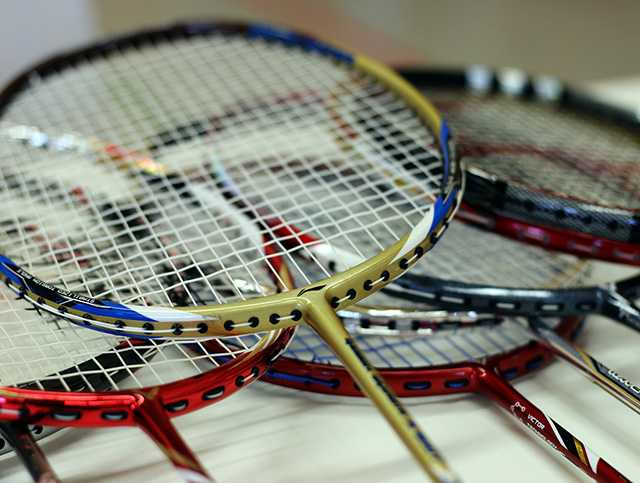Buying a badminton racket can feel overwhelming with so many different models to choose from and marketing language that can be hard to understand.
To simplify it, let’s break it down into three types of badminton rackets commonly preferred by badminton players.
 badminton rackets
badminton rackets The 3 types of badminton rackets by playing style
There are head-heavy, head-light, and even-balanced rackets, and they refer to where the manufacturer places more weight. This is called the balance point.
These three types of badminton rackets are often compared based on a player’s preferred playing style. Players who love smashing and attacking tend to prefer a head-heavy racket as the extra head weight allows for a more powerful swing. They are often compared to a sledgehammer that requires work to start its momentum but once it has begun, it provides extra force making the shuttle fly faster, but at the expense of slower movement in other areas of the game.
Head-light rackets tend to be the opposite and have more weight placed at the handle (imagine turning the sledgehammer upside down). These rackets don’t offer any additional power in your strokes but they are faster and easier to maneuver through the air, which is useful when defending against fast smashes or when playing doubles games as those tend to be faster.
Finally, there’s the even-balanced racket which falls somewhere in between as it carries the weight in the middle rather than in one of the ends. It offers a good blend of both worlds at the expense of not being dominant in either area.
Not all rackets are meant for all players
Many beginner players tend to like the power-based rackets as they haven’t trained their technique to hit long and powerful shots, and the extra head weight can help.
As players advance their skills, some find that they get more benefit from switching to other styles of rackets as they are now able to produce more power with technique and wants the racket to help them in other aspects of the game that are difficult to practice, like rapidly moving the racket through the air to defend a fast shot that comes in an unexpected area of the court.
Speaking of beginner players, there are also three general types of badminton rackets that help define a player’s technical skill level and which racket will better suit them.
This is independent of the three playing styles above and is referred to as the racket’s flexibility.
Beginner players usually haven’t practiced the timing of hitting the shuttle, so a racket with a flexible shaft can be helpful to aid with the timing and getting the shuttle over the net, at the expense of power and control.
Advanced players tend to prefer a stiffer racket as their technique is strong and they are able to leverage the stiffer shaft to hit more precise and powerful shots.
Finally, there’s a level in between, medium flexibility, which tends to be suited for intermediate players but there are more nuances to this depending on the brand and material used.
Select the racket’s weight class based on your preferred game category
To add to the complexity, there’s another component to consider when looking for the best badminton rackets: the weight class.
Many players and brands (but not all) refer to a scale that decreases in weight as the number increases (counterintuitive, I know). In the past, a heavier 2U weight class was common for rackets whereas that one is virtually unheard of these days, except for as a training racket that isn’t used during games.
In singles games, where players tend to prefer the heavier racket categories, the 3U category tends to be the most common one whereas, in doubles, it’s the lighter 4U weight class as the game often has a faster pace with two players on either side being able to return the shuttle.
Some racket series offer even lighter rackets that are available in 5U and 6U weight classes but 3U and 4U are generally the most common these days. It’s the weight classes you’ll find the most popular rackets available in.
Related Pages
- Badminton Equipment & Facilities
- Badminton Court Dimensions
- Badminton Equipment in our online store.
- Badminton Terminology


 Current Events
Current Events